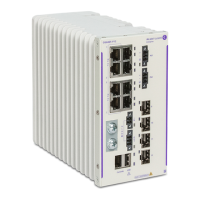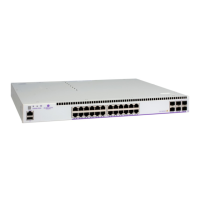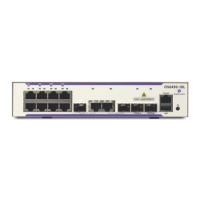Virtual Private LAN Services
7210 SAS M Services Guide Page 291
3. Announce VPN to RR using BGP-AD.
4. Send membership update to each client of the cluster.
5. LDP exchange or inbound FEC filtering (IFF) of non-match or VPLS down.
6. Configure VPN (10) on edge node (PE2).
7. Announce VPN to RR using BGP-AD.
8. Send membership update to each client of the cluster.
9. LDP exchange or inbound FEC filtering (IFF) of non-match or VPLS down.
10.Complete LDP bidirectional pseudowire establishment FEC 129.
SDP Usage
Service Access Points (SAP) are linked to transport tunnels using Service Distribution Points
(SDP). The service architecture of the 7210 platform allows services to be abstracted from the
transport network.
MPLS transport tunnels are signaled using the Resource Reservation Protocol (RSVP-TE) or by
the Label Distribution Protocol (LDP). The capability to automatically create an SDP only exists
for LDP based transport tunnels. Using a manually provisioned SDP is available for both RSVP-
TE and LDP transport tunnels. Refer to the appropriate 7210 SAS OS MPLS Guide for more
information about MPLS, LDP, and RSVP.
Automatic Creation of SDPs
When BGP AD is used for LDP VPLS and LDP is used as the transport tunnel there is no
requirement to manually create an SDP. The LDP SDP can be automatically instantiated using the
information advertised by BGP AD. This simplifies the configuration on the service node.
Enabling LDP on the IP interfaces connecting all nodes between the ingress and the egress, builds
transport tunnels based on the best IGP path. LDP bindings are automatically built and stored in
the hardware. These entries contain an MPLS label pointing to the best next hop along the best
path toward the destination.
When two endpoints need to connect and no SDP exists, a new SDP will automatically be
constructed. New services added between two endpoints that already have an automatically
created SDP will be immediately used. No new SDP will be constructed. The far-end information
is gleaned from the BGP next hop information in the NLRI. When services are withdrawn with a
BGP_Unreach_NLRI, the automatically established SDP will remain up as long as at least one
service is connected between those endpoints. An automatically created SDP will be removed and
the resources released when the only or last service is removed.
